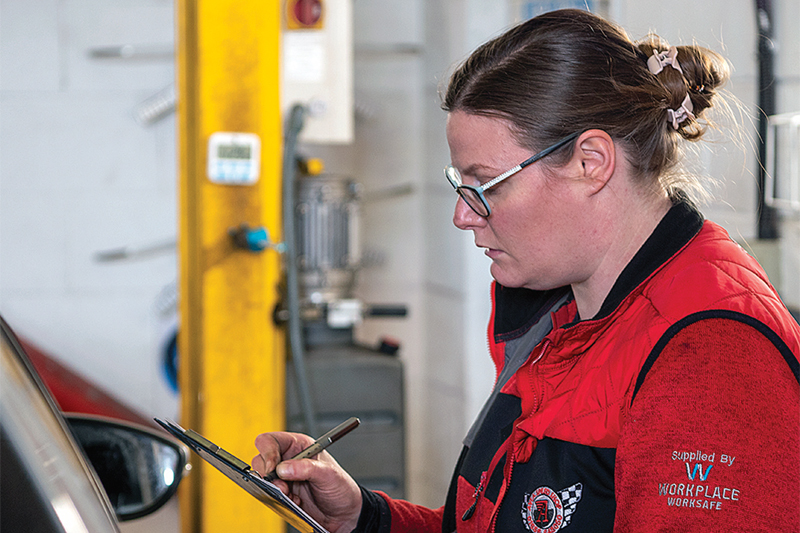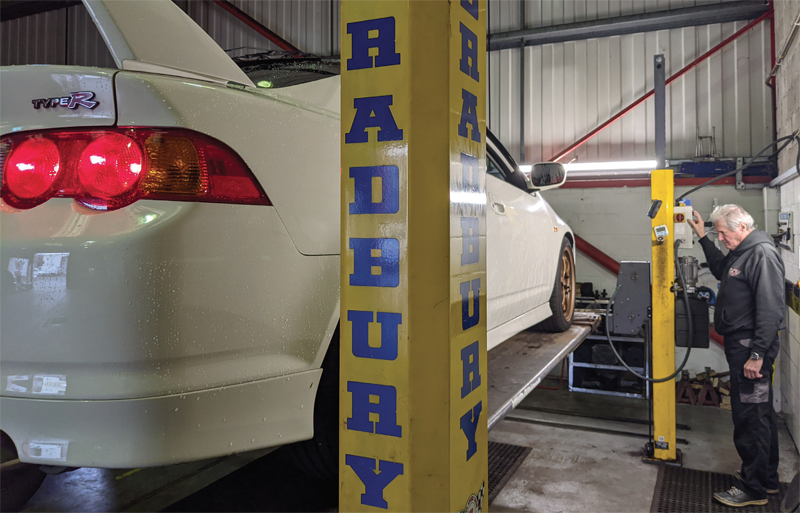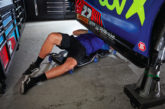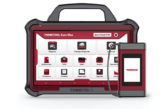
Regular PMM contributor Hayley Pells outlines everything that you need to know about CPD (Continuing Professional Development) and how it fits into MOT training.
The original checks that made up an MOT test consisted of lights, brakes and steering, and here’s a nice bit of MOT history trivia for you: this is the origin of the three triangles in the MOT logo. This simplistic approach to ensuring a vehicle met the necessary safety standards did not require the rigorous upskilling and continuous training of modern testing. The reasoning behind introducing the CPD requirement and online annual assessment for MOT testing was to improve the professionalism within the sector and help standardise processes. These days, testing is far more complicated than it used to be, and it continues to grow in complexity as vehicles advance with technology.
Starting the process
Once the process of CPD has been laid out, in line with the DVSA syllabus, it is considered best practice to formulate a schedule for its completion. Historically, there has been the unfortunate trend to leave the training until the last minute, completing it as a tick box exercise in order to progress to the annual online assessment. On occasion, it has been known for a garage to purchase the training without leaving time to complete the mandatory time of a minimum of three hours per year (16 hours over five years) before the online annual assessment is accessed.
In previous years, the pass rate was lower and the subject matter more suited to drawing on the existing experience of the tester, which meant weaker areas of a technician’s knowledge were rarely tested. Now, the new syllabus requires an up-skilling of weaker areas, meaning that the training can no longer be as easily dismissed.
Use your time wisely
Scheduling training to fit around the needs of the workshop not only achieves compliance, but also refreshes the tester’s knowledge, and therefore improves testing standards. The choice of dividing the training requirements can be made by the organisation, providing that the minimum of three hours is completed over the year, and the required 16 hours is completed within the five-year timespan. For example, there could be four years of three hours, followed by a fifth year of four hours, which would average three hours and 12 minutes every year. For the sake of ease, if you aimed to do four hours each year for five years, you could balance this out by scheduling 20 minutes of training every month (you will have done surplus to requirements).
Understanding the portal
The current assessment has proved unpopular. This is likely due to the fact that it is seated more in the compliance aspect of testing, rather than the knowledge of practical skills. The capability of the tester’s portal demonstrates how intuitive the meta data has become. Typing ‘CV boot’ into the search box will guide you to the correct area and provide you with a hyperlink to the correct page in the manual, where ‘constant velocity joint gaiter’ is situated for the tester to complete further reading if required. The guide has a noticeably limited functionality when compared with the testing service.
Although it will be developed in time to have the same functionality, this is small comfort to those completing the annual assessment with little experience of how it currently works.
The need for CPD can be considered in the same context as servicing and repairs, whereas the annual assessment is the MOT test for the MOT tester. Keeping up with that essential maintenance throughout the year will lead to an easy and stress-free annual test for both situations.
There are free resources available on the government website to record your CPD. Make sure that it follows the year’s syllabus, bearing in mind that this will change after the deadline for assessment.
A ‘buddy’ system with another MOT lane may help in working through the syllabus – linking up with other MOT testers has never been easier thanks to social media, so make use of it! This can be particularly helpful if you are alone as a tester within a workplace, or if you are at the opposite end of the scale and work for a large organisation. Breaking into smaller groups to support each other through the training is a cost-effective method.

The practicalities
If you choose not to develop your own training strategy, you can outsource training delivery to achieve compliance. There are many organisations who offer CPD and they can be accessed in a variety of formats.
- Digitally (e-learning)
- Blended learning (both remote and in person)
- In person at the vehicle testing site
- In person at a training facility
An organisation does not need to be approved to provide annual CPD, and courses can include the online assessment, or you may be expected to source your own. A list of training providers that provide MOT Tester and/or Manager training can be found here. Some of these organisations may offer CPD and annual assessment access, but there is not a government list of CPD providers.
Training and assessment can be as little as £60 plus VAT for an e-learning package, £100 plus VAT for a shared classroom course, or around £300 plus VAT for a site-delivered course (which will often require the purchase of the online assessment, £34 plus VAT on top).
The pandemic has increased the uptake of digital e-learning. With this in mind, time rather than money will be your main consideration, so perhaps this is something to consider if you’re experiencing a quiet period?
CPD Road Map
- Reflection – What is the current state of training and assessment?
- Planning – Using the syllabus: plan out a content schedule (for example, 20 minutes per month)
- Action – Complete the training; sit the annual assessment ahead of deadline
- Evaluation – Review the results; apply further training if required
Further resources









